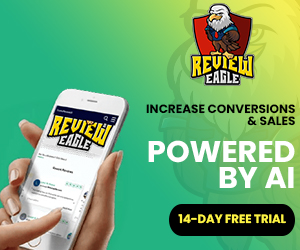Having a strong online presence is crucial for businesses of all sizes. Whether you're a small startup or an established company, the key to success lies in effectively optimizing your website. But what exactly does website optimization entail, and why is it so important in boosting your online visibility?
In this comprehensive blog post, we'll explore expert website optimization strategies that will take your online presence to new heights. So buckle up and get ready to unlock the secrets of maximizing your website's potential!
Website optimization is the process of making strategic changes to your website to improve its visibility in search engine results and enhance the overall user experience. By carefully analyzing and implementing various tactics, you can ensure that your website appears prominently when users search for relevant keywords related to your business.
In other words, website optimization is the key to getting your website noticed and attracting more organic traffic. But before we dive into the nitty-gritty details of website optimization, let's take a step back and understand why it matters in the first place. In today's hyper-competitive digital landscape, having a well-optimized website is no longer a luxury – it's a necessity.
With billions of websites vying for attention, standing out from the crowd is becoming increasingly challenging. However, by leveraging expert website optimization strategies, you can gain a competitive edge and establish a strong online presence that drives conversions and boosts your business's growth.
In this blog post, we'll uncover a treasure trove of website optimization techniques that will revolutionize the way you approach online marketing. From keyword research and on-page optimization to mobile responsiveness and user experience, we'll leave no stone unturned in our quest to help you unleash the full potential of your website. So get ready to supercharge your online presence and embark on a journey towards digital success!
Understanding the Importance of Website Optimization
Website optimization is not just a buzzword in the digital marketing world – it's a fundamental aspect of building a successful online presence. In this section, we'll delve deeper into why website optimization is crucial for your business.
First and foremost, website optimization plays a vital role in improving your search engine visibility. When users search for keywords related to your business, you want your website to appear at the top of the search engine results page (SERP). By optimizing various on-page elements such as meta tags, headings, and URL structure, you can increase your chances of ranking higher in search results.
Moreover, website optimization enhances the overall user experience. A well-optimized website loads quickly, has intuitive navigation, and provides valuable content that meets users' needs. When visitors have a positive experience on your site, they are more likely to stay longer, explore other pages, and ultimately convert into customers or clients.
Another reason why website optimization is important is that it helps you stay ahead of the competition. In today's cutthroat digital landscape, businesses are constantly vying for attention. By implementing expert optimization strategies, you can differentiate yourself from competitors and establish yourself as an authority in your industry.
In summary, website optimization is essential because it improves search engine visibility, enhances user experience, and gives you a competitive edge. By investing time and effort into optimizing your website effectively, you can attract more organic traffic and boost conversions.
Conducting Effective Keyword Research for Your Website
Keyword research forms the foundation of any successful website optimization strategy. By identifying relevant keywords that align with your business goals and target audience's search intent, you can optimize your content to attract organic traffic.
The first step in conducting keyword research is brainstorming a list of potential keywords that are relevant to your business. Put yourself in your target audience's shoes and think about the words or phrases they would use when searching for products or services similar to yours.
Once you have a list of potential keywords, it's time to analyze their search volume and competition level. Tools like Google Keyword Planner, SEMrush, or Ahrefs can provide valuable insights into the average monthly search volume and keyword difficulty.
When selecting keywords, aim for a balance between high search volume and low competition. While it may be tempting to target highly competitive keywords with massive search volumes, it's important to consider your website's authority and the resources at your disposal. Targeting long-tail keywords (more specific phrases) with moderate search volumes can often yield better results.
After finalizing your keyword list, strategically incorporate them into your website's content. This includes optimizing meta tags (title tag and meta description), headings, URLs, image alt text, and naturally integrating them into your page copy.
Remember that keyword research is an ongoing process. As trends change and user behavior evolves, regularly revisit your keyword strategy to ensure you're targeting the most relevant terms.
Optimizing On-Page Elements for Better Search Engine Visibility
On-page optimization involves optimizing various elements on individual web pages to improve their visibility in search engine results. In this section, we'll explore some key on-page optimization techniques that can boost your website's search engine rankings.
The first element to optimize is the title tag – the HTML element that defines the title of a web page. It should accurately describe the content of the page while incorporating relevant keywords. Keep it concise (around 60 characters) and compelling to entice users to click through from the SERP.
The meta description is another crucial on-page element. Although it doesn't directly impact search engine rankings, it plays a significant role in attracting users to click on your website. Write a compelling meta description that accurately summarizes the page's content and includes relevant keywords.
Headings (H1, H2, H3, etc.) are essential for organizing your content and signaling its structure to search engines. Use headings to break up your content into logical sections and include relevant keywords where appropriate.
URL structure also plays a role in on-page optimization. Ensure that your URLs are descriptive, concise, and include relevant keywords. Avoid using generic URLs with numbers or random characters.
Lastly, optimize your image alt text by providing descriptive text that accurately represents the image's content. This not only helps visually impaired users understand the image but also provides an opportunity to include relevant keywords.
By implementing these on-page optimization techniques, you can improve your website's visibility in search engine results and attract more organic traffic.
Creating High-Quality and Engaging Content
In the world of website optimization, content is king. High-quality and engaging content not only attracts visitors but also keeps them coming back for more. In this section, we'll explore how to create compelling content that resonates with your target audience.
The first step in creating great content is understanding your target audience's needs and preferences. Conduct market research to identify their pain points, interests, and aspirations. This will help you tailor your content to address their specific needs effectively.
When crafting your content, focus on providing value to your audience. Whether it's educational blog posts, informative videos, or interactive infographics – make sure each piece of content serves a purpose and helps solve a problem or answer a question.
Incorporate relevant keywords naturally into your content to improve its visibility in search engine results. However, avoid keyword stuffing – the practice of excessively using keywords in an attempt to manipulate rankings. Search engines are smart enough to recognize this tactic and may penalize your website.
Another important aspect of creating engaging content is using a variety of media formats. Mix text with images, videos, and infographics to make your content visually appealing and easy to consume. This not only enhances the user experience but also increases the chances of your content being shared on social media platforms.
Lastly, don't forget about the importance of readability. Use clear and concise language, break up your content into shorter paragraphs, and use headings and bullet points to improve readability.
By following these guidelines, you can create high-quality and engaging content that resonates with your target audience and drives organic traffic to your website.
Enhancing User Experience for Increased Engagement
User experience (UX) plays a crucial role in website optimization. A positive UX not only keeps visitors engaged but also encourages them to explore more pages on your site and take desired actions. In this section, we'll explore some key strategies for enhancing user experience on your website.
The first step in improving UX is ensuring that your website loads quickly. Users have little patience for slow-loading websites, so optimize your site's performance by compressing images, minifying CSS and JavaScript files, leveraging browser caching, and choosing a reliable hosting provider.
Intuitive navigation is another important aspect of a good user experience. Make sure that visitors can easily find what they're looking for by organizing your site's structure logically and providing clear navigation menus.
Incorporate clear calls-to-action (CTAs) throughout your website to guide users towards desired actions such as making a purchase or filling out a contact form. Use contrasting colors, compelling copy, and strategic placement to make your CTAs stand out.
Mobile responsiveness is crucial for providing a seamless user experience. With the majority of internet users accessing websites on mobile devices, it's essential that your site is optimized for different screen sizes and loads quickly on smartphones and tablets.
Lastly, regularly test and optimize your website's usability. Conduct user testing sessions to gather feedback and identify areas for improvement. Make data-driven decisions by analyzing user behavior using tools like Google Analytics or heatmaps.
By prioritizing user experience and implementing these strategies, you can increase engagement on your website and encourage visitors to take desired actions.
Optimizing Your Website for Mobile Devices
In today's mobile-first world, optimizing your website for mobile devices is no longer optional – it's a necessity. In this section, we'll explore why mobile optimization matters and how to ensure that your site provides a seamless experience across different devices.
The number of people accessing the internet via smartphones and tablets has skyrocketed in recent years. As a result, search engines like Google prioritize mobile-friendly websites in their rankings. If your site isn't optimized for mobile devices, you risk losing potential customers or clients to competitors with better mobile experiences.
To optimize your website for mobile devices, consider implementing responsive design. Responsive design ensures that your site adapts to different screen sizes and resolutions without compromising functionality or aesthetics. This means that users will have a consistent experience whether they're accessing your site from a desktop computer or a smartphone.
When optimizing for mobile, pay attention to page load times. Mobile users are often on-the-go and have limited patience for slow-loading websites. Compress images, minify CSS and JavaScript files, leverage browser caching, and prioritize above-the-fold content to ensure fast load times on mobile devices.
Additionally, make sure that your website's text is easily readable on smaller screens. Use legible font sizes and avoid long paragraphs that can be overwhelming to mobile users. Break up content into shorter sections and use headings to improve readability.
Finally, test your website's mobile responsiveness across different devices and browsers. Use tools like Google's Mobile-Friendly Test to identify any issues or areas for improvement.
By optimizing your website for mobile devices, you can provide a seamless user experience and ensure that you're not missing out on potential customers or clients.
Utilizing Social Media to Boost Your Online Presence
Social media has become an integral part of our daily lives, and it presents a massive opportunity for businesses to boost their online presence. In this section, we'll explore how you can leverage social media platforms to increase brand visibility and drive traffic to your website.
The first step in utilizing social media effectively is identifying the platforms that align with your target audience. Conduct market research to understand which social media platforms your target audience uses the most. This will help you focus your efforts on the platforms where you're most likely to reach and engage with potential customers or clients.
Create compelling profiles on these platforms that accurately represent your brand's voice and values. Use high-quality visuals, craft engaging bios, and include links back to your website wherever possible.
When it comes to content creation, focus on providing value rather than solely promoting your products or services. Share informative blog posts, industry news, helpful tips, or entertaining videos that resonate with your target audience. This will help establish you as an authority in your industry and build trust with potential customers or clients.
Engage with your audience by responding to comments, messages, and mentions promptly. Show genuine interest in their opinions and concerns, and use social media as a platform for building meaningful relationships with your followers.
Lastly, don't forget to promote your website's content on social media. Share blog posts, videos, or other valuable resources that link back to your site. This will not only drive traffic but also improve your website's visibility in search engine results.
By utilizing social media effectively, you can increase brand visibility, engage with your target audience, and drive traffic to your website.
Implementing Technical SEO Strategies for Better Performance
While on-page optimization focuses on optimizing individual web pages, technical SEO involves optimizing the technical aspects of your entire website. In this section, we'll explore some key technical SEO strategies that can improve your website's performance and search engine rankings.
The first step in implementing technical SEO is ensuring that search engines can crawl and index your website effectively. Create an XML sitemap that lists all the pages on your site and submit it to search engines like Google. This helps search engines understand the structure of your site and index it more efficiently.
Next, optimize your website's URL structure by using descriptive URLs that include relevant keywords. Avoid using generic URLs with numbers or random characters as they provide little value to users or search engines.
Improve page load times by optimizing image sizes, minifying CSS and JavaScript files, leveraging browser caching, and choosing a reliable hosting provider. Slow-loading websites not only frustrate users but also receive lower rankings in search engine results.
Ensure that your website is secure by implementing HTTPS encryption. HTTPS not only protects user data but also provides a ranking boost in Google's algorithm. Obtain an SSL certificate from a trusted certificate authority to enable HTTPS on your site.
Regularly monitor and fix broken links on your website. Broken links not only hinder user experience but also negatively impact your website's search engine rankings. Use tools like Google Search Console or broken link checkers to identify and fix broken links.
Implement structured data markup on your website to provide search engines with additional context about your content. Structured data helps search engines understand the type of content on your site and can lead to rich snippets in search results.
By implementing these technical SEO strategies, you can improve your website's performance, enhance its visibility in search engine results, and provide a better user experience.
Measuring and Analyzing Website Performance
Measuring and analyzing your website's performance is crucial for understanding what's working and what needs improvement. In this section, we'll explore some key metrics and tools that can help you gain valuable insights into your website's performance.
The first step in measuring website performance is setting up a web analytics tool like Google Analytics. This free tool provides a wealth of information about your website's traffic, user behavior, conversions, and more. Install the tracking code on every page of your site to start collecting data.
Once you have Google Analytics set up, pay attention to key metrics such as total sessions, bounce rate, average session duration, and conversion rate. These metrics can help you understand how users are interacting with your site and whether they're taking desired actions.
Use Google Search Console to monitor how well your site is performing in search engine results. It provides valuable insights into keyword rankings, click-through rates (CTR), impressions, and more. Identify keywords that are driving organic traffic to your site and optimize further for those terms.
A/B testing is another powerful technique for measuring website performance. By creating multiple versions of a webpage with slight variations (e.g., different headlines or call-to-action buttons) and testing them against each other, you can determine which version performs better in terms of conversions or engagement.
Heatmap tools like Hotjar or Crazy Egg can provide visual representations of user behavior on your site. Heatmaps show where users are clicking, scrolling, or spending the most time on a page. Use this data to identify areas for improvement and optimize your website's layout and design.
Regularly review your website's performance data and make data-driven decisions to improve its effectiveness. Experiment with different strategies, track the results, and iterate based on what works best for your business goals.
Conclusion: Unleashing the Full Potential of Your Website
Website optimization is a critical aspect of building a successful online presence. By understanding the importance of website optimization, conducting effective keyword research, optimizing on-page elements, creating high-quality content, enhancing user experience, optimizing for mobile devices, utilizing social media platforms, implementing technical SEO strategies, and measuring website performance – you can unleash the full potential of your website.
Remember that website optimization is an ongoing process. Stay up-to-date with industry trends and algorithm updates to ensure that your optimization strategies remain effective. Continuously monitor your website's performance and make necessary adjustments to stay ahead of the competition.
By investing time and effort into expert website optimization strategies, you can boost your online presence, attract more organic traffic, engage with your target audience effectively, drive conversions or sales, and ultimately achieve digital success.
The AI Web Agency is dedicated to helping our clients grow their business. Growth is the DNA and foundation of our focus in everything we provide to our clients. The AI Web Agency offers marketing services that make our client's phones ring, their websites fill with visitors, and keeps their existing clients engaged. We deliver this growth both online and offline, to local businesses and national brands. We leverage the power of AI to provide precision personalized content delivered via Email, Web, and Social Media to help businesses grow.









